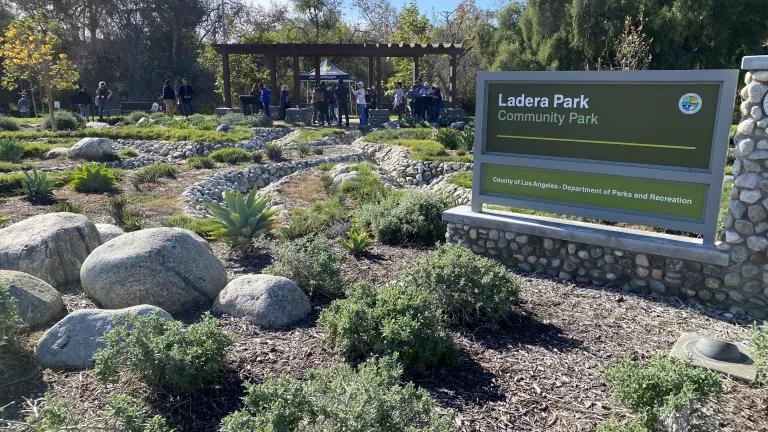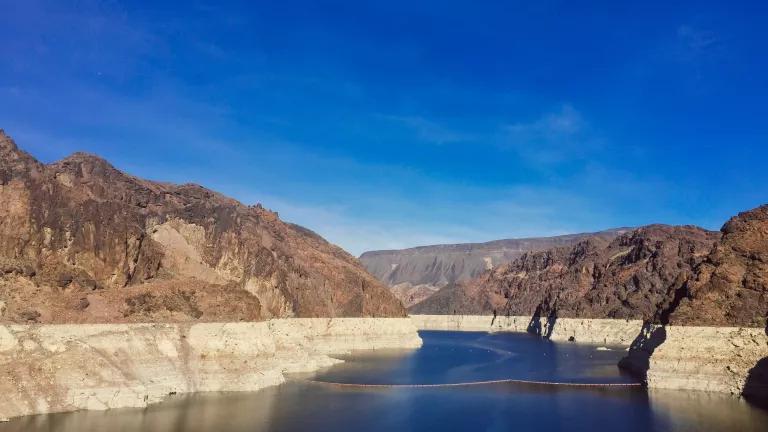Fighting a Flood of Misinformation about CA Water
For more than a decade, the science has been clear that we need to reduce diversions from the Bay-Delta in average and drier years.

A tidal distributary of the San Joaquin River
Ken James/California Department of Water Resources (CDWR)
The past weeks following our recent large storms have been awash in misinformation and hypocrisy about operating and permitting water infrastructure in California. Even those who closely follow the news about California water are likely unaware that the data shows that more than half of the runoff from the storms in early January was captured and stored in the Central Valley. Or that the loudest voices criticizing environmental protections for our rivers and fisheries during the storms – which are requirements of the Trump Administration’s 2019 biological opinions – are the very same voices demanding that legislators and the courts keep those biological opinions in place. This misinformation undermines progress, constructive dialogue, and trust in solving California’s water challenges.
The award for hypocrisy goes to Rep. Valadao and House Republicans, who recently re-introduced legislation that would codify the Trump Administration’s 2019 biological opinions into law and require the water projects to “be operated consistent with” these regulations (H.R. 215), and the very next day demanded that the federal government operate the water projects in violation of those 2019 biological opinions in order to pump more water from the Delta. Similarly, the State Water Contractors have spent the last several years arguing in Federal Court that the 2019 biological opinions use the best available science and should be implemented and upheld by the Court, yet in the past week they publicly suggested the biological opinions’ limits on pumping in the Delta aren’t scientifically justified and need to be rewritten.
The reality is that the Trump Administration’s 2019 biological opinions were the product of political interference in the scientific process, gutting then-existing environmental protections to produce permits that are a plan for extinction. And in just the first three years of implementing these biological opinions, the water projects have already violated the terms of these permits (including exceeding the incidental take limits), requiring reinitiation of consultation as a matter of law. Moreover, the agencies will have to develop new biological opinions because Longfin Smelt, a species that is threatened with extinction by unsustainable water diversions from the Delta, is finally being listed under the Endangered Species Act.
But it’s also true that even these woefully inadequate biological opinions include some limits on the operations of the Central Valley Project and State Water Project in order to protect salmon and other fish and wildlife – which also benefit Native American Tribes, thousands of fishing jobs, and communities that depend on their health. Even with those limits on Delta pumping in place, according to an analysis by the Bay Institute, from January 1 to January 17 just more than half (51%) of the runoff from the storms were captured by dams and pumps throughout the Central Valley – about 4 million acre feet of water:

The Bay Institute 2023
California has been capturing a lot of water from these storms, contrary to the flood of misinformation from certain water users and politicians. Moreover, between January 18 and January 26, Delta pumping has not been limited by the biological opinions or any other environmental protections, and instead “Available Facility Capacity” is the only thing limiting CVP and SWP pumping.
In general, strengthening environmental protections in the Delta beyond the woefully inadequate Trump biological opinions and the State’s 1995 water quality standards is necessary to protect fish and wildlife and comply with State law, and – as the Secretary of the Interior wrote in 2016, before the Trump Administration hijacked the process, and as the State Water Resources Control Board wrote in 2018 – on average is likely to result in reduced water supply from the Delta. For more than a decade, the science has been clear that we need to reduce diversions from the Bay-Delta in average and drier years, leading the Legislature in 2009 to adopt State policy to reduce reliance on the Delta by investing in water recycling and other sustainable local and regional water projects (which are cost-effective and also generate other benefits, like good paying jobs developing these drought resilient water supplies).
When the state and federal water projects violate regulatory requirements that protect the environment in order to divert more water using existing dams and infrastructure—and when their contractors and allies demand that the State and Feds violate these environmental rules, spreading misinformation—it destroys the trust that new water infrastructure would be responsibly operated in the future, delaying and undermining the process of permitting new infrastructure. As I’ll discuss more in my next blog, that’s a pathway to gridlock that benefits no one except those who profit from the unsustainable status quo.



